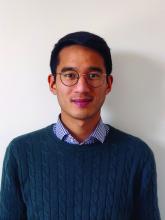Researchers have identified three distinct subgroups of Sjögren syndrome (SS) with different prognoses. While previous efforts to stratify these patients were based on reported symptoms, this new analysis is the first to add clinical and biological manifestations into the equation.
The three distinct patient clusters are those with B-cell active disease with low symptom burden (BALS), those with high systemic disease activity (HSA), and those with low systemic disease activity and high symptom burden (LSAHS). Each group had distinct long-term outcomes, including disease evolution and lymphoma incidence.
The findings were published in The Lancet Rheumatology.
Derived and Validated in Separate Cohorts
Researchers led by Yann Nguyen, MD, PhD, of Bicêtre Hospital and Paris-Saclay University, Paris, France, identified distinct subgroups with data from the French Paris-Saclay cohort, a group of patients suspected of having SS who participated in a multidisciplinary diagnostic session at a French National Referral Center for Rare Systemic Autoimmune Diseases and were recruited between 1999 and 2022.
The study included only patients who met the 2002 American-European Consensus Group criteria for SS and had European Alliance of Associations for Rheumatology (EULAR) Sjögren’s Syndrome Disease Activity Index (ESSDAI) and EULAR Sjögren’s Syndrome Patient Reported Index (ESSPRI) scores at inclusion. Researchers excluded patients with other autoimmune diseases associated with SS.
Researchers identified distinct subgroups using 26 variables, including patient-reported symptoms, clinical parameters, and biological data.
Researchers then validated the subgroups using the same methodology in the Assessment of Systemic Signs and Evolution of Sjögren’s syndrome (ASSESS) cohort, a national French multicenter prospective cohort formed in 2006. They then compared changes in disease activity (measured by ESSDAI) and patient-acceptable symptom state (measured by ESSPRI) between the groups over 5 years of follow-up, as well as differences in lymphoma incidence over 15 years of follow-up.
Patients With High Systemic Disease, Low Symptoms Fare Worse
The study ultimately included 534 patients from the Paris-Saclay cohort and 395 patients from the ASSESS cohort. For both groups, 94% of patients were women, and the median age was between 53 and 54 years.
In the Paris-Saclay group, 205 patients were classified as BALS, 160 were HSA, and 169 were LSAHS. In the ASSESS cohort, BALS remained the largest group (186 patients), followed by HSA (158 patients). Only 51 patients in the second cohort were classified as LSAHS.
During 5 years of follow-up in the ASSESS cohort, systemic disease activity improved in the HSA cluster and worsened in the BALS cluster, while there were no significant changes in the LSAHS cluster. The BALS cluster was the only group to experience significant changes in patient-acceptable symptom states during follow-up: 49% of patients with BALS had an ESSPRI score of less than 5 at inclusion, but this percentage dipped to 36% at month 60.
The findings “highlight the fact that even in patients who present with predominantly systemic manifestations, the symptom burden is high and should not be neglected,” the authors wrote.
The three categories established in this study did not correlate well with previous symptom-based stratification of patients with SS, the authors noted, which looked at the five most common symptoms associated with the condition: Pain, fatigue, dryness, anxiety, and depression.
“Patients from the high symptom burden, dryness dominant with fatigue, and pain dominant with fatigue subgroups were present in each of our three clusters,” they wrote. “This finding is consistent with the poor correlation between patient-reported outcomes and systemic disease activity.”
Lymphoma was diagnosed in 5 of 186 patients (3%) in the BALS cluster, diagnosed after a median of 70 months of follow-up, and 6 of 158 patients (4%) in the HSA cluster, diagnosed after a median of 23 months follow-up. There were no cases of lymphoma in the LSAHS group.
“Notably, in the BALS cluster, lymphoma occurred later than in the HSA cluster, and after 5 years, systemic manifestations in this cluster tended to be similar to those in the HSA cluster at inclusion,” the authors added. “The BALS cluster could therefore represent an earlier stage of the disease and carry the risk of progressing toward a more systemic phenotype.”


